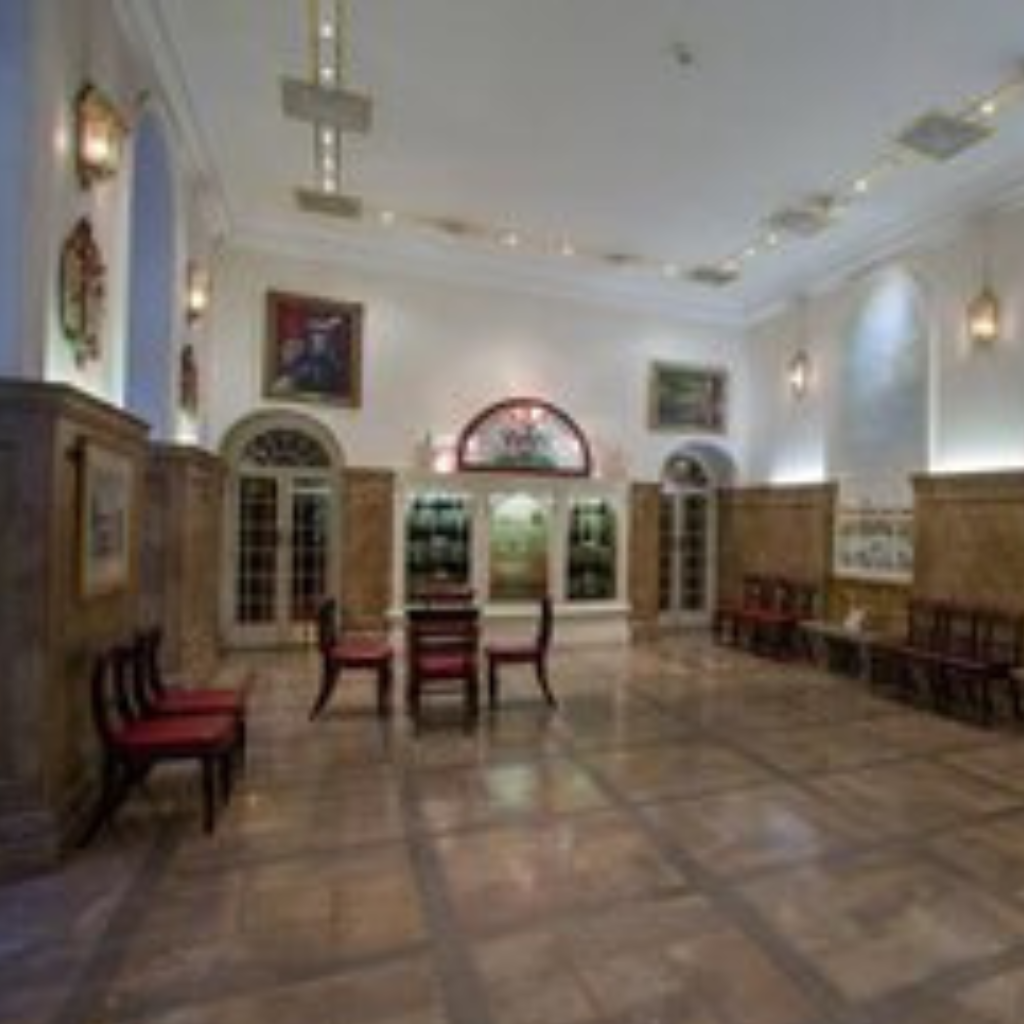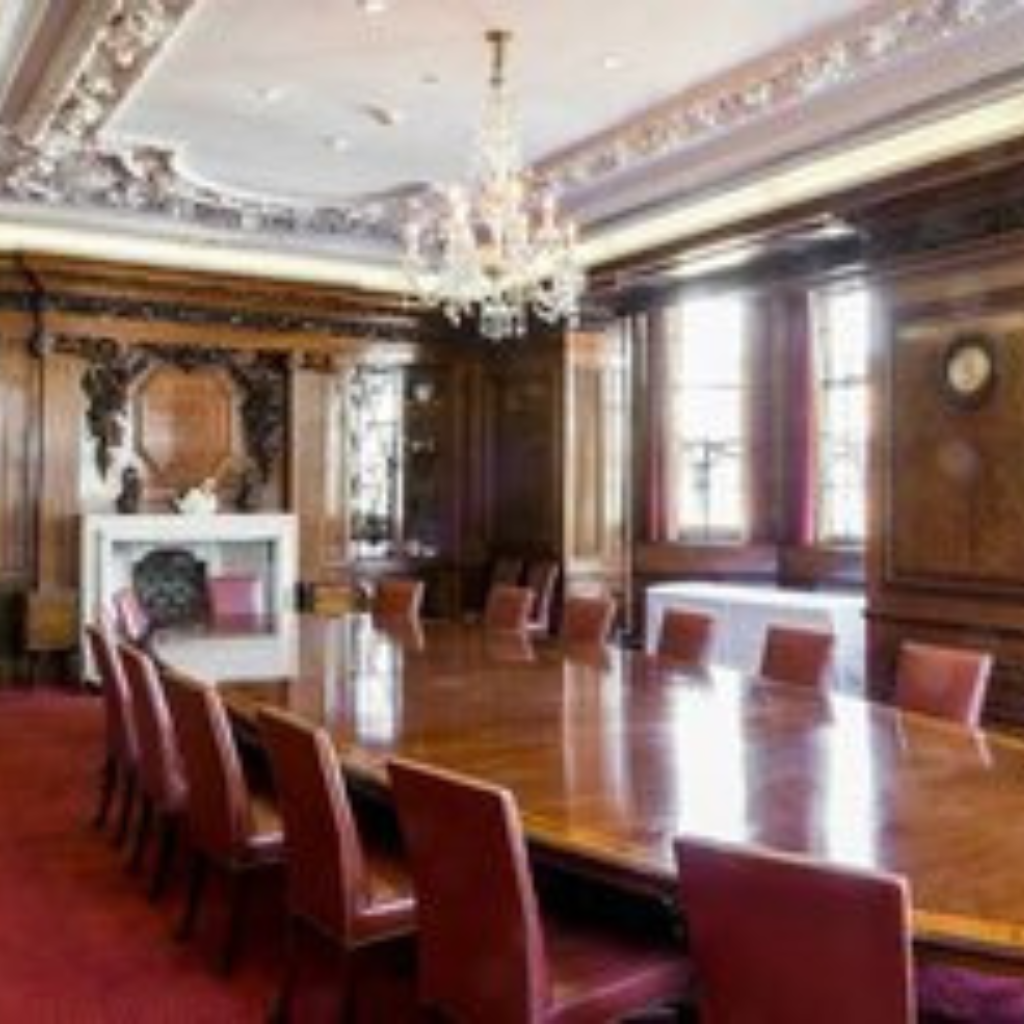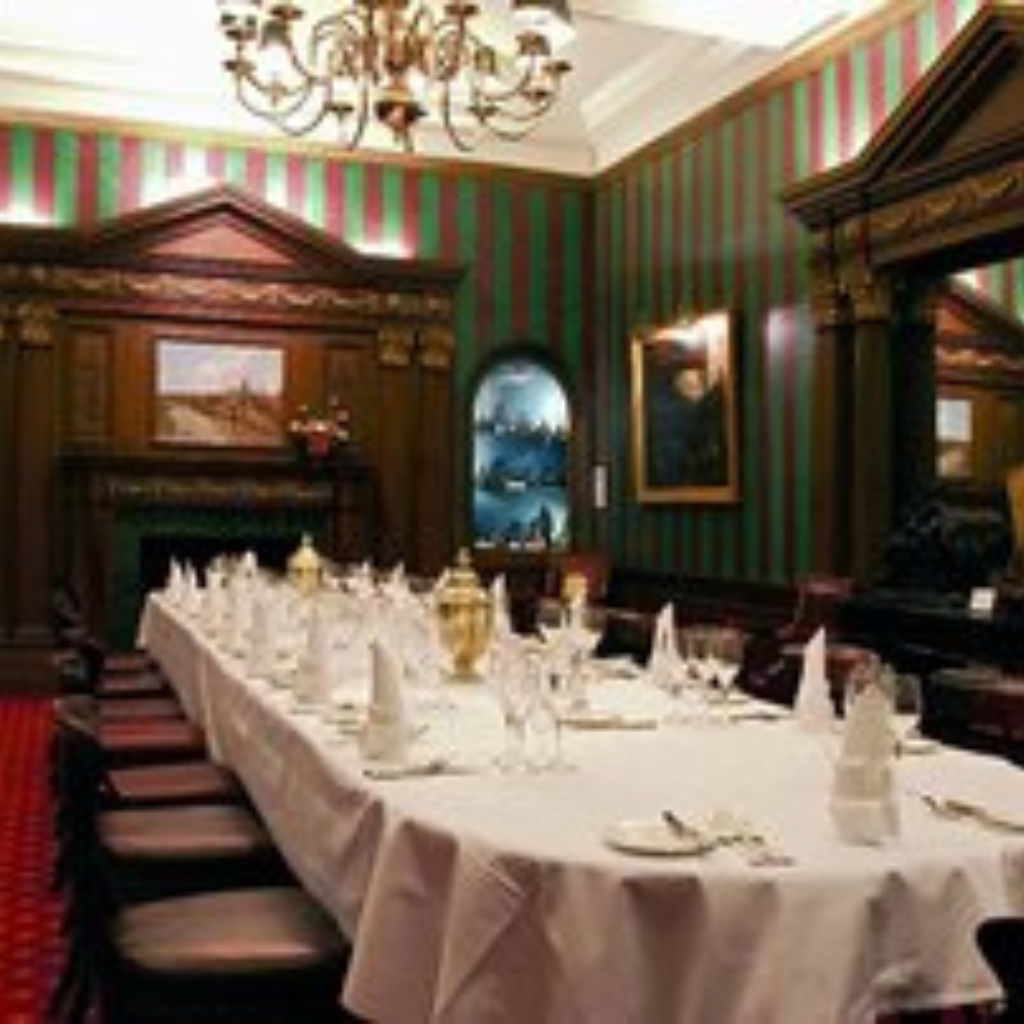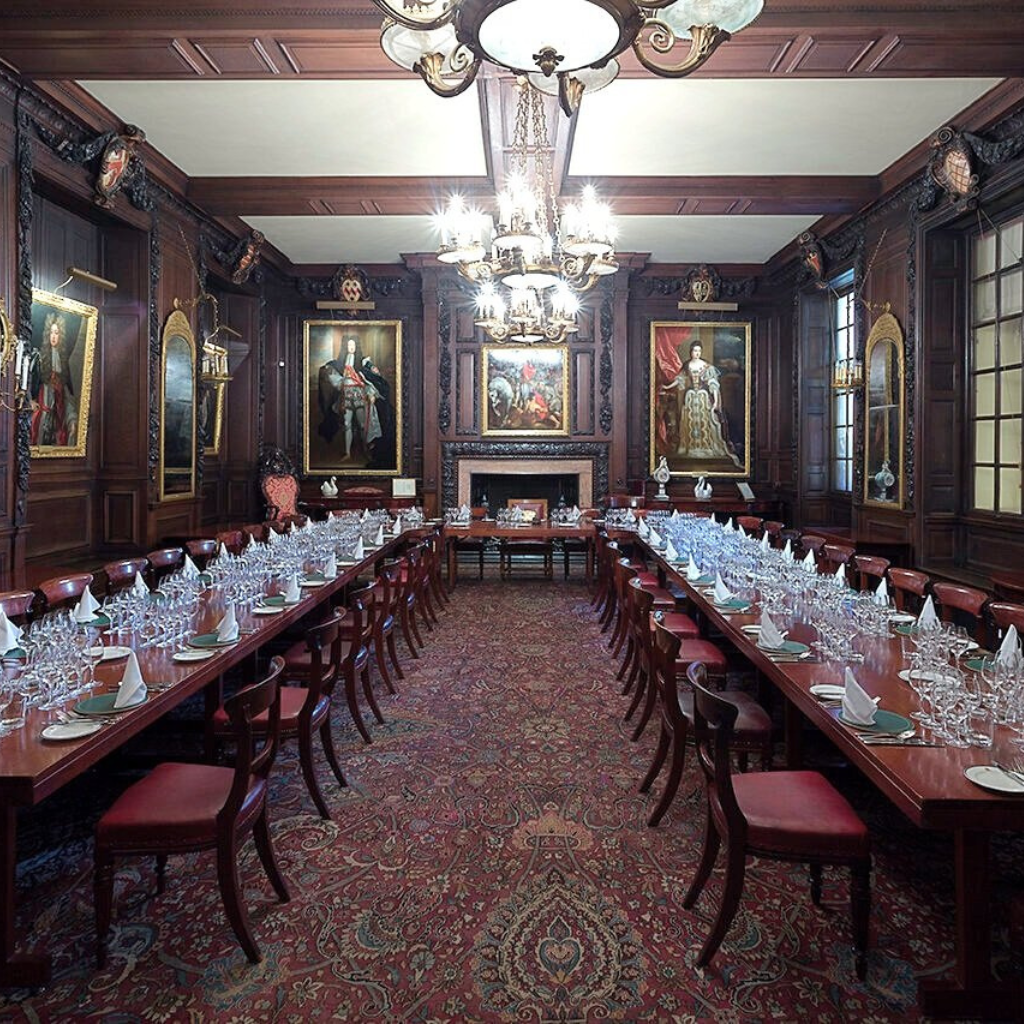Vintners Hall
London, England
Vintners’ Hall provides a wonderful venue for your special event in the City of London.
From an intimate private dinner or lunch in the fabulous Court room or Gassiot room to a full white-tie banquet in the spectacular Livery Hall. Conferences, seminars, wine tastings, exhibitions, weddings and memorial services can all be arranged and tailored to suit your every need.
With an impressive history and spectacular surroundings, this is the perfect location to treat your guests to an event space that is a cut above the everyday.
Perfect for
Dinners
Receptions
Conferences
Private Dining
+ More
Features
- Historic venue
- Prestigious building
- Central location
- Fine dining menu
- Multiple hire spaces
- Elegant surroundings
Event Spaces
The present room was built in 1671 and still retains late-seventeenth-century carving. Most of the heads under the windows are probably original, as are the coats of arms in the west screen. (The east screen dates only from 1822.)
The room was returned to its original appearance after the Second World War when the opportunity was taken to eliminate some of the more obvious Victorian alterations, including the stained glass. The alcove in the north-east corner, now containing plate, was the original entrance to the Hall. The ceiling was replaced in 1932-33 because of death watch beetle. It was designed by George Alexander Gale, later the Company’s Surveyor, and modelled on the ceiling of the Old School Room at Winchester College.
The cement floored attic above it proved to be the salvation of the Hall from incendiaries during the Blitz.
In August 2013 the ceiling was repainted in a stunning new colour scheme by Dolby & Taylor.
Reception – 250
Dinner/Lunch ‘E’ shape – 158
Round tables – 120

It is designed to have an ‘outdoor’ feel and is often used for wine tastings.
The Company’s right to own swans on the Thames is by prescription, ie before legal memory. It predates the Company’s first surviving records. The first mention of swans in the Vintners’ archives is a payment for looking after them during the “Great Frost” of 1509. The care of the swans is entrusted traditionally to the Junior Warden, or ‘Swan Warden’. The Swan Warden’s banner hangs at the western end of the room. The swans are counted and the cygnets ringed on an annual Swan Upping Voyage in July.
On the north wall is a pastel of Swan Upping by Patricia Ashmore. On the east wall are portraits of Richard Turk, Swan Marker for 56 years (1904-60), by James Dring, and of Bruce Todd, Swan Warden in 1964, by Aubrey Davidson-Houston.
Facing the French windows are three false arches. The three trompe l’oeil paintings within them were executed by Colin Failes in 1996. They depict scenes on the south bank of the Thames at different times in the Company’s history. Also displayed in the room are archaeological finds from the excavations for Vintners’ Place, and various antique bottles. Also on the north wall are the armorial bearings of three recent Vintner Lord Mayors, Sir Denis Truscott OBE TD (1957-8), Sir Noel Bowater GBE MD (1953-4) and Sir Lionel Denny GBE MC (1965-6). A painting of all three hangs in the lobby between the Gassiot Room and the Livery Hall.
Dinner/Lunch – 24
Reception 24

Situated on the third floor of what is now Five Kings House, adjacent to the Hall. Designed as a meeting room in the neoclassical style, although it includes some baroque elements. A classic room for more formal meetings but also available for lunches and dinners.

Named after Charles Gassiot (Master Vintner 1894) and ideal for committee meeting , lunches and dinners or as an over-spill for larger events in the main Livery hall.

Dinner/Lunch – 24
Reception 24

The Drawing Room was redecorated in the current style in 1899 by Mr Schmidt and refurbished in 1989, with additional refurbishment to the ceiling in 2017.
The room contains a fine collection of enamel and porcelain wine labels. The longcase clock was made in 1683 by James Gavell. The Company’s charters line the walls, and over the Boulle cabinet hangs the first deed for the Hall dated 1352. The Annexe was created over the Entrance Corridor in 1989. In it is hung the tapestry of 1466 depicting St Martin and St Dunstan, and the hearse cloth given in 1539 by John Hussee (Master 1528-31).
The Conservatory was also formed in 1989. Much of the ironwork comes from the demolished Vintry House. The lead cistern with the Company’s shield dates from 1701, and the bronze swan was presented in 2002 by Past Masters Butler-Adams and Newton.

Dinner/Lunch – 50
Reception 159

The greater part of the carving dates from the rebuilding after the Great Fire. It contains many fine pieces of furniture including a marquetry-cased clock, given by John Cannon in 1704, the year he was Master; the Master’s Chair, first mentioned in the archives in 1800 but possibly bought in 1770-1; the pier glasses near the fireplace which were given in 1719 by Richard Collett, Master in 1718; and two girandoles, probably bought from Parkers in 1792.
Most of the coats of arms in the cornice are nearly contemporary with the room and are those of prominent members of the Company, many of them Mayors or Lord Mayors, including Sir Thomas Bloodworth, Lord Mayor at the time of the Great Fire of 1666.
The room contains a fine painting of St Martin Dividing his Cloak with the Beggar, after Van Dyck, first mentioned in the archives in 1702-3, and portraits of Charles I, Charles II, Mary II, Prince George of Denmark (the Consort of Queen Anne), Robert Shaw, Master in 1636, and Sir Thomas Rawlinson, Master in 1687 and Lord Mayor in 1705.

Dinner/Lunch – 50

